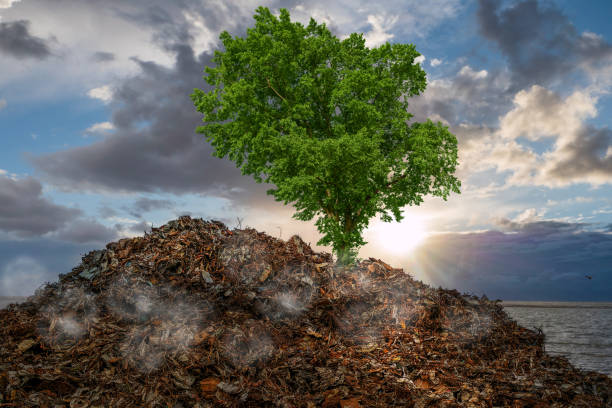

In recent decades, climate change has emerged as one of the most pressing global challenges of our time. From rising sea levels to extreme weather events, the impacts of a warming planet are becoming increasingly evident, affecting ecosystems, economies, and communities around the world. In response to these growing threats, the concepts of climate change resilience and adaptation have gained prominence as essential strategies for minimizing the risks associated with climate change and securing a more sustainable future.
Understanding Climate Change Resilience
Climate change resilience refers to the ability of individuals, communities, and systems to withstand, recover from, and thrive in the face of climate-related stresses and shocks. This resilience is not just about bouncing back to a pre-disaster state but involves building the capacity to anticipate future impacts, absorb the disturbances, and transform in ways that enhance long-term well-being.
Resilience encompasses a range of dimensions, including:
- Social resilience: Strengthening communities by ensuring that they have access to resources, knowledge, and support networks. This might involve creating inclusive policies that protect vulnerable populations, fostering community cohesion, and promoting education on climate risks.
- Economic resilience: Diversifying economies to reduce dependence on climate-sensitive sectors, encouraging investment in sustainable industries, and providing financial safety nets for individuals affected by climate disasters.
- Ecological resilience: Protecting and restoring ecosystems so they can continue to provide essential services like clean water, food, and air. Healthy ecosystems, such as wetlands and forests, can act as natural buffers against climate impacts like flooding and erosion.
- Infrastructure resilience: Upgrading physical infrastructure—such as roads, bridges, and buildings—so that it is better equipped to handle extreme weather events. This can involve designing infrastructure that can withstand higher temperatures, stronger storms, and rising water levels.
The Role of Climate Change Adaptation
While resilience focuses on the ability to recover and thrive despite climate challenges, climate change adaptation specifically refers to actions taken to adjust to the actual or expected consequences of climate change. Adaptation strategies aim to reduce the vulnerability of natural and human systems to the adverse effects of climate change while maximizing potential opportunities.
Adaptation measures can be divided into two main categories:
- Proactive adaptation: Actions taken in advance to prevent or reduce climate impacts. For example, coastal communities might build sea walls or restore mangroves to protect against rising sea levels and storm surges. In agriculture, farmers might adopt drought-resistant crop varieties to safeguard food production in the face of shifting precipitation patterns.
- Reactive adaptation: Responses taken after climate impacts have occurred. This can include rebuilding infrastructure after a hurricane, relocating communities away from flood-prone areas, or providing humanitarian aid to regions affected by prolonged droughts.
Adaptation strategies are context-specific and depend on the unique climate risks and vulnerabilities faced by different regions. In areas prone to flooding, for instance, adaptation might focus on improving water management systems, while in regions experiencing desertification, adaptation could involve sustainable land use practices and water conservation techniques.
Examples of Resilience and Adaptation in Action
Across the globe, various communities and nations are already implementing resilience and adaptation strategies to safeguard their futures. Here are a few examples:
- Bangladesh: One of the most climate-vulnerable countries, Bangladesh has been a pioneer in climate adaptation. The country has invested in early warning systems for cyclones, elevated homes and infrastructure in flood-prone areas, and developed community-based disaster preparedness programs. Additionally, it has promoted climate-resilient agriculture practices, such as saline-resistant rice varieties, to help farmers cope with rising sea levels and saltwater intrusion.
- The Netherlands: Known for its innovative water management systems, the Netherlands has been at the forefront of adaptation efforts. The country has implemented extensive flood protection measures, including dikes, storm surge barriers, and water storage areas, to manage rising sea levels and increased rainfall. The Dutch “Room for the River” program is an example of how nature-based solutions—like restoring floodplains and wetlands—can enhance resilience to flooding.
- Kenya: In the face of prolonged droughts, pastoralist communities in Kenya have adopted a range of adaptation measures to ensure their survival. These include diversifying income sources, improving water harvesting techniques, and engaging in community-led resource management efforts. Additionally, the government and NGOs have supported efforts to rehabilitate degraded land, reforest key areas, and introduce climate-smart livestock practices.
The Importance of Equity in Resilience and Adaptation
As climate change impacts are felt unevenly across different regions and populations, it is critical to ensure that resilience and adaptation efforts are inclusive and equitable. Vulnerable groups—such as low-income communities, indigenous populations, and women—often bear the brunt of climate-related disasters due to their limited access to resources and decision-making power.
Building climate resilience and supporting adaptation efforts must therefore prioritize the needs of these groups, ensuring that they are actively involved in planning and implementing solutions. This could involve providing technical and financial assistance to marginalized communities, promoting gender-sensitive adaptation strategies, and ensuring that indigenous knowledge systems are recognized and integrated into climate policies.
The Path Forward: Investing in Resilience and Adaptation
To effectively address the challenges of climate change, global efforts must focus on both mitigation (reducing greenhouse gas emissions) and adaptation (adjusting to climate impacts). While international climate agreements and policies have historically placed more emphasis on mitigation, there is a growing recognition that adaptation and resilience are equally critical to securing a sustainable future.
Investments in climate-resilient infrastructure, nature-based solutions, and community-led adaptation initiatives will be essential to enhancing the resilience of vulnerable populations. This requires not only financial resources but also strong political will, innovative technologies, and cross-sectoral collaboration.
At the same time, international cooperation is key to ensuring that adaptation efforts are scaled up and adequately funded in developing countries that are often the most affected by climate change. By increasing the flow of climate finance, sharing knowledge and best practices, and strengthening global partnerships, we can build a world that is better equipped to face the challenges of a changing climate.
Conclusion
As climate change continues to reshape our world, resilience and adaptation will play an increasingly important role in protecting lives, livelihoods, and ecosystems. While the task is daunting, proactive and equitable adaptation measures, combined with efforts to enhance resilience across social, economic, and environmental dimensions, offer a path toward a more sustainable and climate-resilient future. By embracing these strategies today, we can mitigate the risks of tomorrow and help ensure a safer, more prosperous world for future generations.
